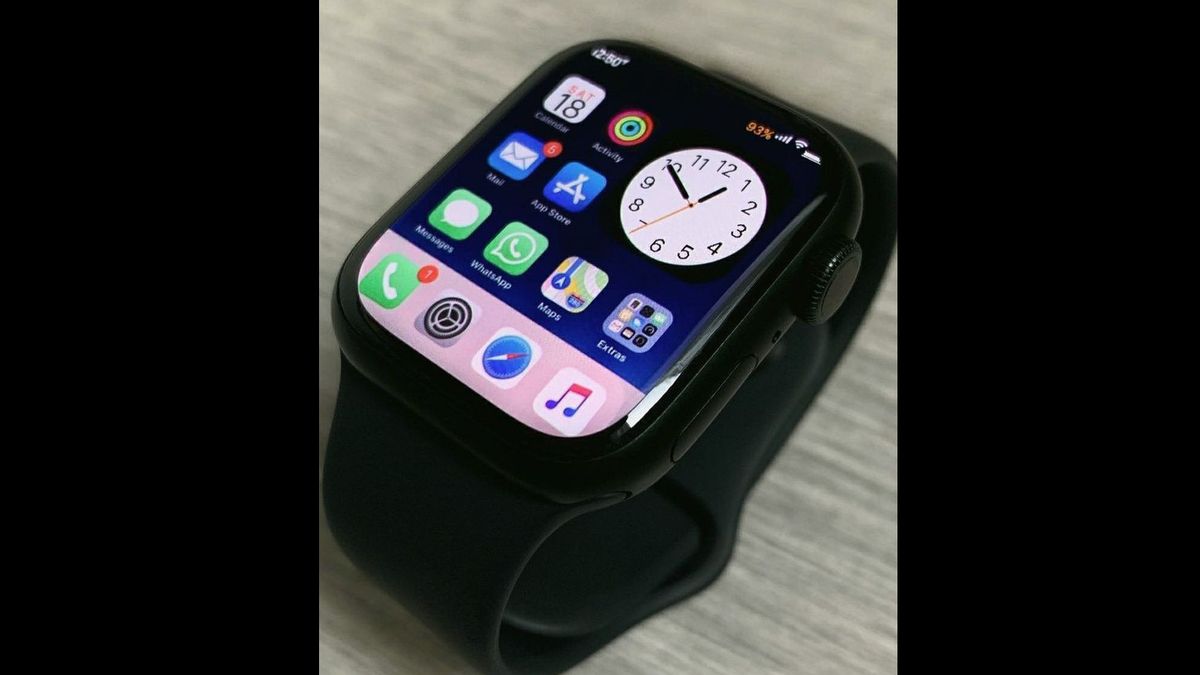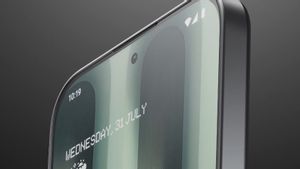JAKARTA - The blood oxygen feature that has now been removed from Apple Watch is praised for saving a woman's life when she lost her responsibility during the flight.
An unnamed 70-year-old British woman experienced shortness of breath on a flight from England to Italy on January 9, so the crew searched for a doctor on the plane to help in a state of emergency.
Another passenger, a National Health Service (NHS) doctor named Rashid Riaz, came to help and asked the flight crew if they had an Apple Watch to monitor the woman's vital signs.
The blood oxygen feature measures the percentage of oxygen carried by red blood cells from the lungs to the whole body, and low levels related to respiratory problems.
Riaz said Apple Watch helped her determine low oxygen saturation in the woman, allowing her to take further steps to keep oxygen levels safe until the plane landed safely.
Despite the many cases in which Apple Watch saved lives, blood oxygen monitors have been removed from new models due to patent infringement lawsuits.
Apple was forced to remove the feature or banned from selling the smartwatch after federal courts rejected Apple's appeal to continue the delay.
The move is part of a sustainable legal dispute with biotechnology startup Masimo which accuses the tech giant of entering talks with him for potential partnerships just to steal the company's idea and recruit some of its engineers to implement it.
Although blood oxygen features are disabled in the new Apple Watch Series 9 and Ultra, this feature still works on units that have been purchased previously.
The January flight to Verona, Italy, from Birmingham, England, when the woman began to experience health problems during a trip with her husband.
Riaz immediately intervened to help after being told a doctor was needed, and he knew that Apple Watches with blood oxygen sensors were the best tools available on the plane.
"Apple Watch helps me know that patients have low oxygen saturation," Riaz said. I used a lot of my own knowledge during these flights on how to use these gadgets.
Riaz, who is an internal medicine specialist at County Hereford Hospital in England, used the app to help her stabilize oxygen levels until the plane landed in Italy.
The woman soon received medical assistance and is expected to recover completely, according to The New York Post. Although the app saved the day on flight, this feature is no longer available on the new Apple Watch after the US International Trade Commission approved Masimo's claim that Apple violated its patents for blood oxygen monitoring technology.
SEE ALSO:
Apple said Masimo's claim was false and said blood oxygen apps, also known as pulse Oxymeters, functioned well for users and could be used to save lives.
The incident on Ryanair took place on January 9, before Apple deactivated the blood oxygen feature in the US, but it still works for people who already have older Apple Watch models.
Since the court's ruling applies only to Apple Watches sold in the US, the Oxygen Blood app is still available on models sold overseas.
News of Apple Watch's role in saving the woman's life comes just a week after Masimo CEO Joe Kiani told Bloomberg: "Apple disguised itself as what they offer consumers as a reliable pulse oximeter, even though that's not true."
"I really feel wholeheartedly that consumers are better off without it," said Kiani.
However, speaking of the importance of smartwatch sensors, Riaz said: This is a lesson on how we can improve air travel [with] this kind of emergency [via] a basic device that is currently readily available.
The English, Chinese, Japanese, Arabic, and French versions are automatically generated by the AI. So there may still be inaccuracies in translating, please always see Indonesian as our main language. (system supported by DigitalSiber.id)


















